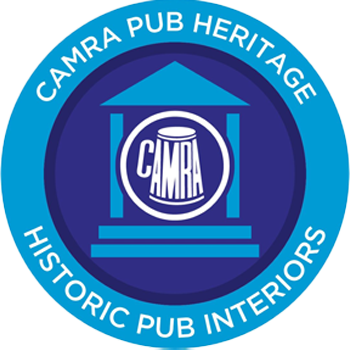This website is currently in beta. If you wish to go back to the current site please click here. To provide feedback or find out more about this site, please click here.


This traditional Scottish bar features a magnificent island bar and gantry in dark mahogany that have been fixtures since 1902. The ornate plasterwork and corniced ceiling are outstanding. The room is predominantly furnished with large tables and wooden bench seating. There's an interesting selection of real ales served by handpump and tall fount. An extensive food menu is available all day in the bar and the upstairs restaurant where real ale can be ordered and children over five are permitted. Owned by DM Stewart, who also have the Cumberland Bar, Guildford Arms and Ryries.
NOTE: Effectively closes to new customers when last orders is called 15 minutes before the time shown.
Three star - A pub interior of outstanding national historic importance
Listed status: B
The Abbotsford was built in 1902 to designs by one of Edinburgh’s most prolific pub architects, Peter Lyle Henderson, for Charles Jenner of Edinburgh’s famous department store and features one of the finest examples of the typically Scottish island-style servery. Unusually there is no gantry in the middle, which no doubt explains the mahogany superstructure on top of the counter. Although such features, normally designed to hold pot-shelves, are now very common in pubs, they are usually no older than the 1960s and this example is a very early and ornate precursor of the type. The panelled walls have inlaid mirrors and there is a richly decorated high plaster ceiling. In the far left corner is the original snack counter, with a fine balustraded and mirrored gantry and various drawers. On the back wall opposite Rose Street is an annunciator box, which indicates that at one time (in addition to the main bar) there were a dining room, a private room and a smoking room. Alterations took place in the 1970s when the first floor was acquired for pub use and a staircase inserted. The Abbotsford is one of a handful of pubs in Edinburgh still using the traditional Scottish method of dispense – the tall fount (the ‘u’ is silent) – to dispense its range of real ales.
One of the finest examples of an island-style pub built 1902 and, apart from changes to the rear of the pub, barely altered since. It is owned by Jenner's Edinburgh's famous department store. It is believed to have been built by Charles Jenner so that his workmen could spend their wages in his own establishment! Unlike the majority of these pubs, the Abbotsford has no island gantry. Instead, the there is a carved mahogany structure with a balustrade around the top perched on the bar counter similar to a modern day 'pot shelf' - Leslie's Bar has a similar arrangement. Designed by one of Edinburgh's most prolific pub architects, Peter Lyle Henderson, it is a red sandstone ashlar building with a corner turret.
In the far left corner is the original snack counter, an unusual survivor still in use for ordering meals at lunchtime, with a good back gantry with a balustrade, and bevelled mirrored panels. The dark, dado-panelled walls have inlaid mirrors; there are mahogany fittings including pediments above the doors, and a very decorative high ceiling in green and cream painted plaster. There was a small lounge at the rear of the bar but this was lost when the first floor was acquired for pub use in the early 1970s and a staircase built in its place. The upstairs restaurant has quality fittings including a small circular bar counter and panelled walls with inset mirrors but all date from the 1970s. The Abbotsford is one of only a handful of pubs in Edinburgh still using the traditional Scottish method of dispense - the tall fount (the 'u' is silent) - to dispense its range of real ales.
This Pub serves 5 changing beers and 2 regular beers.
Abbotsford Bar & Restaurant, Edinburgh
Normally from smaller Scottish breweries
Changing beers typically include: Cromarty (varies) , Loch Lomond (varies) , Swannay (varies)
Source: Regional
Introduction This guide describes the 116 pubs identified by CAMRA as having interiors of national or regional historic or architectural importance, plus a further 24 whose interiors are of some regional interest. Scotland has over 4000 pubs so why do...
